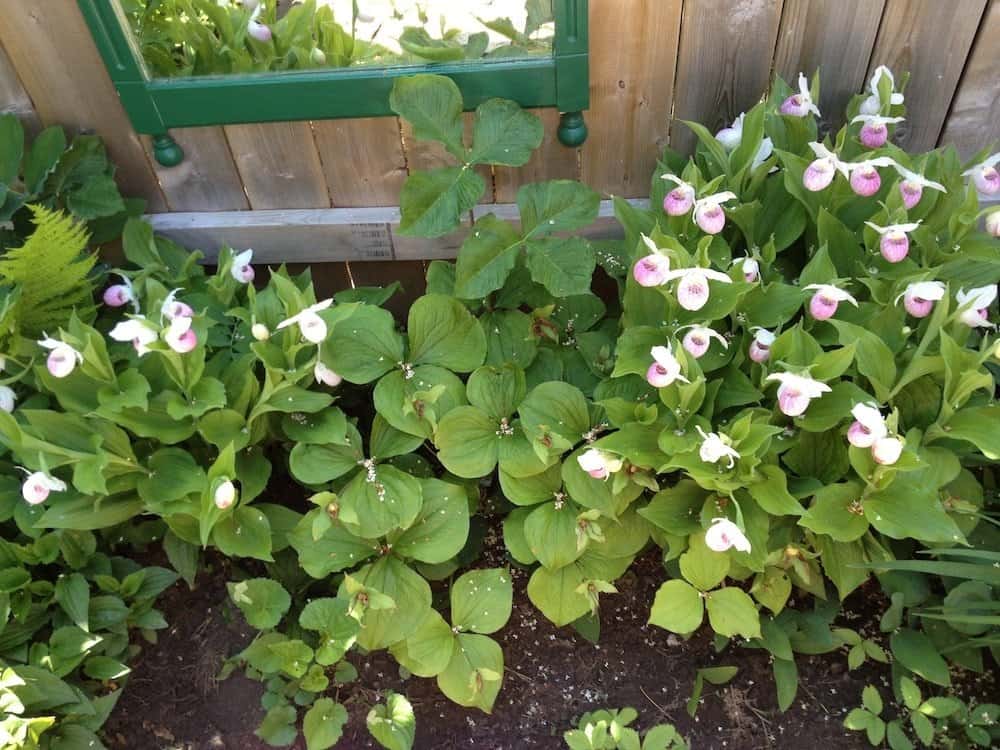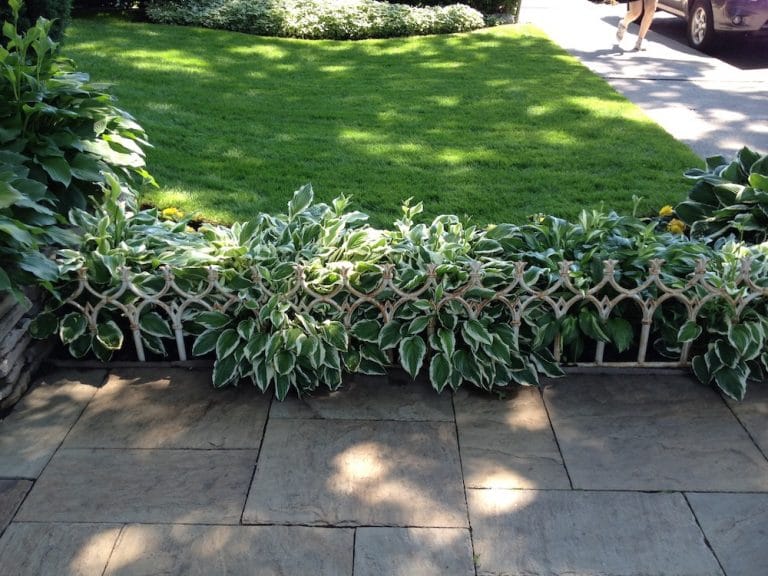I went on my first garden tour this summer and discovered several good gardening ideas even newbies like myself can handle. In case you’re one of the few who don’t already know this, gardeners really love to talk and share their knowledge. They’ll answer any question you have, plus a few others that you didn’t have, and give you more plant suggestions and tips than you’ll be able to remember.

Garden tours are a useful, cheap and easy way to find gardening inspiration. Plus, if you go to a tour in your neighbourhood, you know that every plant you find yourself coveting is one that can handle your soil and climate. These plants won’t lead you on, like so many inevitably will. You get to see a plant outside of a pot in a nursery, and get a sense of how it fits in with companions in a garden.
The gardens I toured were in Bloor West Village, a neighbourhood in Toronto. Here are few ideas I hope to use someday:
1) It’s possible to use found objects in a garden, without making it look like clutter or taking away from the overall scene in the garden. Examples I saw included beautiful and oddly shaped rocks from the Georgian Bay area nestled in with plants, a collection of masks displayed on a fence, lanterns bringing attention to the tree branch from which they were hanging, and low, antique fencing holding back lush hostas along a driveway.

2) One shouldn’t be afraid of bordering a narrow pathway with large plants and shrubs. Privacy is valuable, especially in suburban and urban gardens. Having a narrow, winding pathway with lots of plants on either side can hide the path’s destination from view. I found that small spaces with closed-in, narrow paths seemed larger than they actually were, and they made me feel like I was in someone’s secret garden, maybe trespassing somewhere I shouldn’t.
3) If you have the space, separating your garden into “rooms” can make it feel like an extension of your home. I liked the feeling of walking from room to room in a garden, because it made the garden seem larger and more like it was there to be lived in and used. It lets you give a barbecue or hot tub its own space, so it doesn’t intrude on the rest of the garden.
4) If you have a favourite plant, show it off. Instead of agonizing over where a showstopper can fit in with all the other plants, let it shine on its own and get the attention it wants (and that you want it to have).

There is so much to learn about gardening, but sometimes you don’t have a specific question in mind or problem to solve — you just need some inspiration and some visuals to realize what it is that you want for your own space. Finding a few hours one afternoon to take in a few nearby gardens is a perfect way to get motivated and start your creative juices flowing.



I’ve managed to grow some fairly large tomato plants (3-4 ft. tall) from seeds left over from the chopping board, but they have yet to produce any tomatoes (though they did flower briefly). However, some of my colleagues have already gotten tomatoes despite their tomato plants being much smaller (they used tomato seeds bought in packets). One of my friends told me this is because grocery tomatoes have been bred to make commercially viable tomatoes, but are not necessarily good for growing tomato plants from. Is this true?
Hi Felistas! Your friend is partially right. Grocery store tomatoes are usually complicated hybrids, and their seeds might have a low rate of germination, which would mean they’re not great for growing plants from. Next year, look for young tomato plants at garden centres or farmers’ markets in May. They’re a bargain, given how many tomatoes you’ll get, plus the flavour will be much better than a store-bought tomato.
There are a few other possible reasons for why your plants haven’t produced any fruit this year, besides the possibility that the seeds you saved have a low rate of germination. Saving tomato seeds is more finicky than saving seeds from most other plants, because they need to be fermented before drying. Fermenting them dissolves the gel coat around the seeds and inoculates them against infection. Also, if the plant was grown in too much shade, poor soil or wasn’t watered regularly, then this would affect flowering and fruiting, too. But if you had a few flowers on the plants, but then no fruit, it just wasn’t pollinated.
So, there are a few possible reasons why your plants didn’t give you any tomatoes this year, but buying a small tomato plant next spring will give you many, many tasty tomatoes. And then maybe you can try saving those seeds for the next year!
-Kat